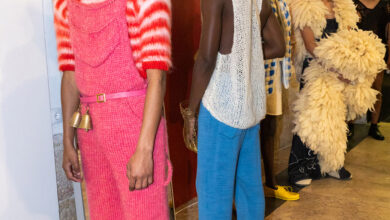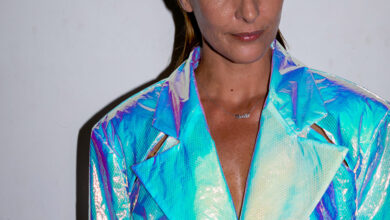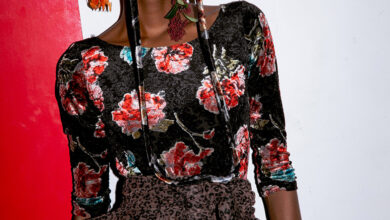ACADEMY OF ART UNIVERSITY A/W 2012-13
Zoot speaks to three graduates from one of the best American fashion design university, San Francisco’s Academy of Art University.
Text by Anna Battista
Graduate shows have turned into the most exciting events of many fashion weeks, the places where you can spot real talents and see genuine innovation and fashion creativity at its best, with no marketing restrictions and anxieties about sales.
Central Saint Martins’ MA graduation show may steal the scene in London, but the graduation show put on by the Academy of Art University has become since 2005 a steady appointment during New York Fashion Week for the American and international fashion industry professionals.
It is undeniable that, fashion-wise the San Francisco-based institution has gone from strength to strength. Internationality set the mood during The Academy’s latest fashion show, with nine designers coming from all over the world and presenting their unique and distinctive vision.
Clean lines and dark shades dominated: Amy Bond transformed complex shapes inspired by construction into minimalist silhouettes, creating practical silk georgette, silk charmeuse and Schoeller-Aeroshell dresses in a neutral palette based on gray, ivory and black with splashes of aubergine, while South Korean Kate Y.K. Lee moved from architecture designing garments defined by a sculptural and sharp silhouette.
The study of philosophy and the Greeks’ theory that beauty is about symmetry, proportion and harmony, provided Xiang Zhang with the main theme for his collection. Focusing on Plato’s theory stating that the highest form of beauty can be explained by principles of mathematics, the young designer layered his ethereal silk mohair dresses and tops characterised by a basic rectangular shape, on white shirts and matched them with sand cashmere coats.
Layering was also the keyword to unlock the collection of pattern maker Jade Juanyu Liu. The latter moved from French collage artist Damien Blottière, a master in creating shadows and spaces through layers. Liu played with different fabrics and materials – wool, jersey and fur – to reproduce Blottière’s technique in her gray, black, and copper bonded microfiber tops and dresses.
Taiwanese-born graphic designer Deanna Pei-Ju Lo opted instead for a collection based on black and navy blue shades inspired by masculine shapes and silhouettes and more specifically by the look of Teddy Boys, but employing luxurious fabrics including lambskin and cotton velvet, hinting at femininity through her choice of materials.
A honourable mention goes to South Korean pattern maker Donghyuk Dan Kim who presented the only menswear collection in the show. Vintage military uniforms and the American West were the starting points, but the designer managed to reinterpret these garments in a uniquely modern way coming up with oilcloth shirts, leather vests, and jackets with padded areas and leather inserts, alternating cotton leggings to sensible pants, playing with volumes and reinventing the classic military oilcloth cape into a modernly urban piece.
Interview with Wu Di
Born and raised in China, after graduating from Shenyang Normal University and starting her design studio in her home country, Wu Di decided to continue her studies at the Academy of Art University and pursue an MFA in Fashion Design.
Her graphic collection, inspired by geometric figures and by the work of artist and printmaker Aaron Coleman that mixes patterns found in nature with man-made technological and architectural elements, features versatile pieces such as coats or dresses with parts that can be zipped off to become functional jackets or separates, and elegant cashmere and double-face wool knits with angular silhouettes and asymmetric tweed patches matched with pencil skirts.

ZOOT Magazine: Who has been the greatest influence on your career choices?
Wu Di: I started to enjoy fashion design as a child. I remember I liked making clothes for my dolls. My mum also played an important role in my choices since she is a great knitter. Among the contemporary fashion houses that I like there are Céline, Lanvin and Calvin Klein.
Z: Can you tell us more about your creative process?
WD: Before designing, I research a lot my inspirations. I also carry out a lot of researches about fabrics both visiting stores in person and searching things online. This is a really interesting part of my design process. Then I do some sketches and small samples of the details in my garments. I try to make sure that all the elements – design, fabrics, colours, details – go well one with the other and then I start making the entire collection.

Z: How did you feel about showcasing your collection at the Academy of the Art fashion show?
WD: I was so excited to get this opportunity and be part of New York Fashion Week. I was feeling nervous because my collection would be the first to be showcased on the Academy of Art runway. Therefore, I really wanted it to set a great mood for the entire show. My family, friends and my professors from the Academy of Art University gave me a lot of support and encouragement. I got great feedback after the show and that really made me happy.

Z: Can you tell us more about your collection, is there a theme behind it?
WD: I was inspired by architecture and by the work of Indianapolis-based artist and printmaker Aaron Coleman and his use of complex geometric patterns and shapes. The collection features angular silhouettes and geometric patterns, which I created using cashmere knits and double-face wool. I opted for luxury fabrics in the entire collection.
Z: What are your future plans?
WD: I want to get a job in a company doing high fashion women”s wear design. This will allow me to keep on studying while being immersed in the real fashion industry.

Interview with Farida Khan
Born in Pakistan and currently living in Qatar, Farida Khan received a Higher National Diploma in Fashion Design from Edexcel BTEC, completing her MFA degree in Fashion Design through the Academy of Art University’s Online Fashion Program.
Ideas of unconventional beauty were the starting point, but Khan mixed this theme with technological inspirations, creating dresses with well-defined shapes using wool gabardine, coated denim, polyurethane and punched leather.

ZOOT Magazine: Who has been the greatest influence on your career choices?
Farida Khan: I find Belgian designers very inspirational. I admire Martin Margiela, Ann Demeulemeester and Raf Simons. Alexander McQueen’s career is also very impressive and I have deep respect for the legacy he has left behind.
Z: How do you find your inspirations?
FK: In a word, I would define myself as a “Metamodernist” as my inspirations try to go beyond postmodernism. Reforming, restructuring and reinventing are the driving forces that keep me inspired. Premeditation is generally never a norm when I develop ideas in my sketch files. I fill many pages with self-created paper cut-outs, automated imagery and surreal writings finding the standout elements that relate most to my mood. I hardly ever work with a single mood board. Fabrics become the focus for development and research at a very early stage and stay so until the actual making of the designs.

Z: How did you feel at showcasing your collection at the Academy of the Art fashion show?
FK: Working with Simon Ungless, the Director of the School of Fashion, as my mentor for the graduate collection has been a very exciting experience. Showcasing this collection at New York Fashion Week does full justice to the hard work put in by the students and by their lecturers. I have received due attention and it has been really positive. I feel this is only the beginning of an exciting journey ahead of me.

Z: Can you tell us more about your collection, is there a theme behind it?
FK: Acute interest in dissolving values about traditional gender specific clothing and trying to find beauty in unconventional places motivated me to develop an understated yet technically complex collection. It is an attempt to rebel against what is generally conceived as awe-inspiring beauty. I wanted to define both today and tomorrow”s designs by developing classic pieces – in wool, cotton, coated denim, state of the art polyurethane and punched leather – that somehow represented the beginning of a quest for innovation. This collection represents for me the beginning of a radical journey that I will devote myself to throughout the length of my career. I tend to always rebel, yet I never forget to pay homage to the traditionally tailored pieces that never fail to fascinate me.
Z: What are your future plans?
FK: I have been encouraged to go onto further studies at European fashion schools and I am seriously looking at this option for career development. I 05OEG makes Nederlander acquisition to organize for online market liberalization Olympic casinos Eesti AS, a subsidiary of Eastern European casino operator Olympic Entertainment Group (OEG), acquired Netherlands-registered holding company Siquia Holding B. would then settle down in Paris. I dream about working with Raf Simons one day! The Academy of Art University has provided me with excellent training. I am confident I can use this foundation to further enhance my career path.

Interview with Jeanette Au
Jeanette Au grew up in New York City as a second generation Chinese-American and graduated from the Fiorello H. La Guardia High School of Music and Performing Arts where she studied painting and drawing. She left New York to study performance, printing, video and digital media at the San Francisco Art Institute, but ended up training in knitwear design at the Academy of Art University’s MFA programme.
The strong colours – including sapphire, silver blue, garnet, ruby and copper – intricate 3-D patterns and textures characterising her collection are inspired not only by the nuances of the Ballets Russes’ costumes, but also by musical compositions that accompanied the corps de ballet’s choreographies, such as Stravinsky’s “The Rite of Spring”.

ZOOT Magazine: You started as an artist, but then decided to train in knitwear, what prompted this decision?
Jeanette Au: I decided to train in knitwear design when I realised that knitwear could blur the boundaries between art, craft and fashion and be a medium where a dialogue could be pushed and challenged. Contemporary women artists such as Louise Bourgeois, Yayoi Kusama, Janine Antoni, whose work deal with the body and who use sculpture or fabric as mediums, were also influential in my choice. These women created pieces suspended between the grotesque and the beautiful and challenging traditional notions of beauty always inspired me. The work of Turkish artist Pinar Yolaçan, her depictions of elderly women dressed in tripe and chicken heads or her S&M Leigh Bowery-esque Venus of Willendorfs, recently had a profound influence on me. While I design, I am always aware of this duality and contradiction, of this fine line between these two different moods, plus I enjoy having a sense of humor in fashion.

Z: Can you tell us more about your creative process?
JA: I start off researching my inspirations that usually come from different sources, from watching a film or reading a novel to seeing a contemporary art exhibit, taking photos or hearing a musical score. Once I have the direction and the mood, I choose the colors and source the yarns and materials I want to use. Then I start experimenting with various techniques to create the textures that reflect the mood and inspiration.
Z: How did you feel at showcasing your collection at the Academy of the Art fashion show?
JA: I received a lot of positive responses from the audience and the press at New York Fashion Week. I felt that my work resonated with people on an emotional level because the colors and textures were overwhelming and reached out to all the senses. I felt that my audience “got it” and that my communication through fabric and form was effective and this was very important to me.

Z: Can you tell us more about your collection, is there a theme behind it?
JA: My collection took root in my fascination with the Ballets Russes and Serge Diaghilev’s collaborative efforts with artists such as Vaslav Nijinsky, Léon Bakst and Igor Stravinsky, who helped constructing an exotic and imaginary “other”, a fantasy created for Western desire and consumption. Thinking about dance, music and visuals converging, I tried to translate this type of multi-sensory decadence with rich, shimmery, sensuous and textural knits. “Le sacre du printemps” (The Rite of Spring) ballet and score was also a major theme and inspiration, as I imagined the patterns reflecting light, moving and changing colour according to Stravinsky’s dissonance and Nijinsky’s pigeon-toed staccato movements. My muse was the heroine from the film “The Red Shoes”, a ballet dancer whose personal and professional struggle imitates the tragic ballet that she performs based on the Hans Christian Andersen’s cautionary fairy tale. She’s asked why she desires to dance and she answers “Why do you want to live?” For her, living is equated with being able to create her art form and I related to this feeling and struggle while I was working on this collection.
Z: What kind of materials did you use for this collection?
JA: I used mohair, wool, synthetic and metallic yarns to create the knitted fabric. I wanted to focus on the craziness that could be accomplished only through knitwear, so I only used materials that I could knit with.
Z: What are your future plans?
JA: I have plans to design accessories for an eco-sustainable company and I will be working on custom orders from my collection. I would love to work with Kenzo or Rodarte one day because both brands produce strong knitwear.

All images by Randy Brooke/WireImage












